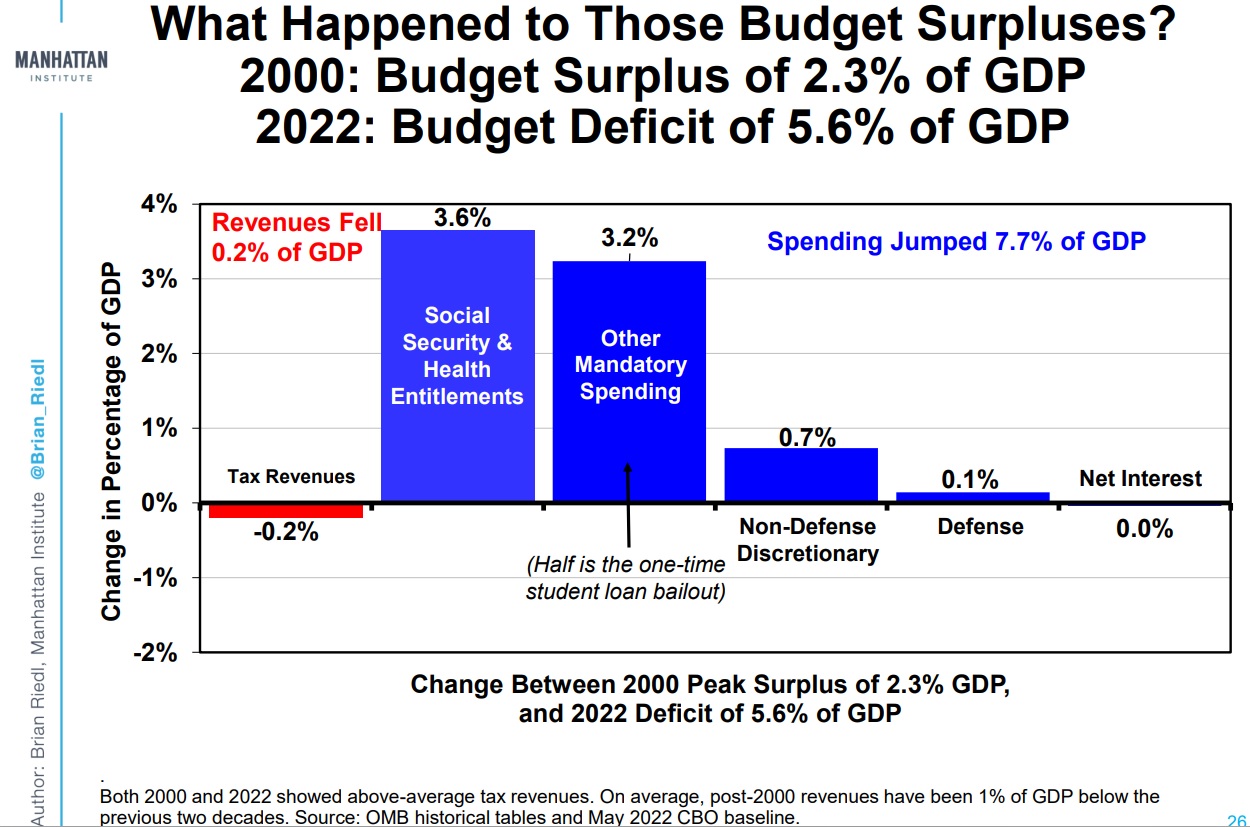I don’t spend much time worrying about why the United States has a big budget deficit. I’m much more concerned about the fact that the federal government is too big and that it is spending too much.
Moreover, there’s plenty of evidence that we can quickly get rid of deficits with some long-overdue spending restraint. In other words, deal with the underlying disease of excessive government and the symptom of red ink goes away.
But since many people focus first and foremost on fiscal balance, let’s take a look at why budget surpluses at the turn of the century have turned into big budget deficits.
I’m motivated to address this issue because of this chart from Brian Riedl’s impressive collection. It shows spending increases are responsible for 97.5 percent of the shift.

Some of you may be wondering if the chart is accurate. I can easily imagine my friends on the left exclaiming, “What about the Bush tax cuts and the Trump tax cuts?!?”
Those tax cuts did happen, but they were mostly offset by Obama’s “fiscal cliff” tax increase and real bracket creep (the tax burden tends to increase over time since even small increases in economic growth will push households into higher tax brackets).
So the net result of all these factors is that there has been a very small reduction (0.2 percentage points) in tax revenue as a share of economic output.
Others of you may be wondering if the spending numbers may be exaggerated because of pandemic-related spending.
That is a fair question since the crowd in Washington used the opportunity to spend a couple of trillion dollars. But the silver lining to that dark cloud is that it was almost entirely one-time spending that took place in 2020 and 2021 (for what it’s worth, budget experts have mocked Biden’s claim of deficit reduction this year since it is simply a result of expiring emergency outlays).
There is some one-time spending in 2022. As noted in the chart, Biden’s reckless student loan bailout is a big chuck of the increase in “other mandatory spending.”
As such, I suppose I should say that higher spending is “only” responsible for 96.8 percent of today’s higher deficits, not 97.5 percent.
The bottom line is that all 21st-century presidents (and Congresses) have been big spenders.
P.S. According to the long-run forecast from the Congressional Budget Office, a bad situation will get even worse over the next 30 years. And more than 100 percent of that future decline will be the result of excessive spending (something that’s been true for many years).
———
Image credit: Shaw Girl | CC BY-NC-ND 2.0.

